The History of TOYOTA at Le Mans
~Looking back over a long history of unending challenges~
For those who would aspire to the arena of racing, be they drivers or engineers, they look to one race as a pinnacle challenge of the sport, the 24 Hours of Le Mans.
It was in 1985 that Toyota first took up the ultimate challenge that is Le Mans, and since then they have developed many race machines, fought hard many times and finally won their first Le Mans victory. And from there, they went on to claim a triumphant fourth consecutive win at Le Mans in 2021.
1985-1988The Le Mans challenges begin with production model-based small-displacement engines
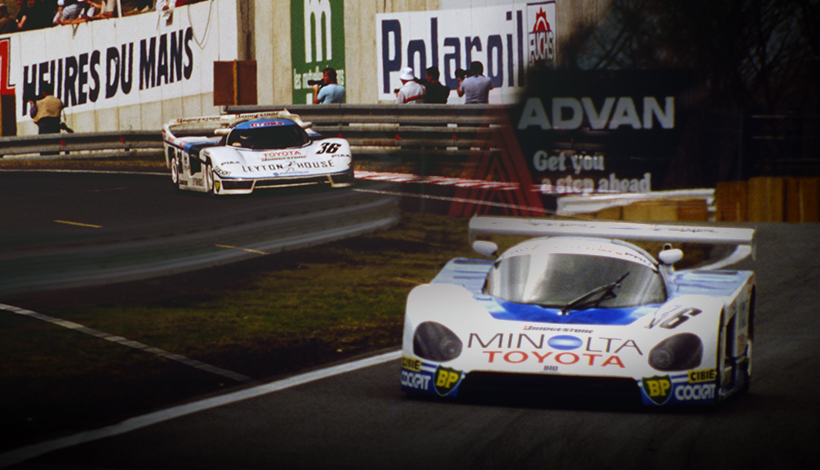
In 1985, exactly ten years after the first entry at Le Mans with a Toyota engine in the Sigma MC75, two Toyota Tom's 85C machines in the 24 Hours of Le Mans. Of the two 85C cars starting the race with a 2.1-liter 4-cylinder turbocharged engine (Toyota 4T-GT) mounted on a machine with a Tom's/Dome aluminum monocoque, one was able to successfully complete the 24-hour race in 12th place. This was to be the first page of Toyota's history of challenges at the 24 Hours of Le Mans, which continue to this day.
1989-1990A Group C car is developed and gets best result yet of 6th place
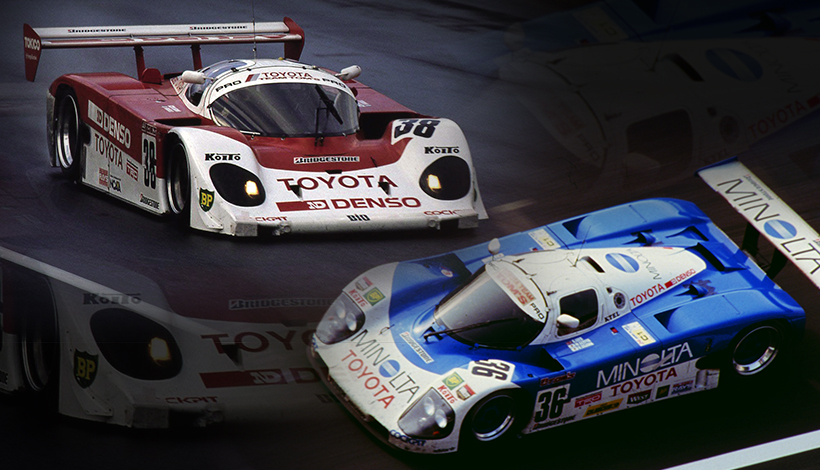
Having achieved considerable success with cars mounting small-displacement mass-produced engines, in 1988 Toyota developed its 88c model, which finally put victory at the 24 Hours of Le Mans within reach. The car was produced by TRD, while Tom's specialized in the race operations. In its carbon monocoque chassis, the 88C-V mounted a V8 3.2-liter twin-turbo full-race-specific engine, and it would undergo further refinements while competing in the JSPC series, as the team gained race experience.
1992-1994One step away from victory. TS010 finally gets a podium
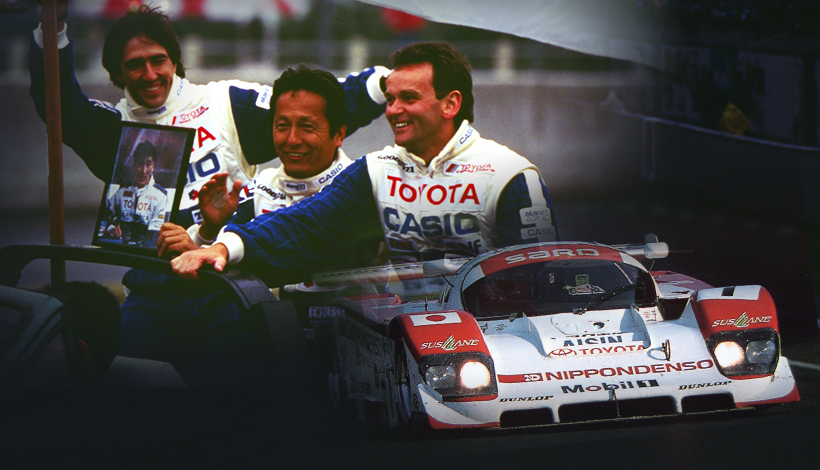
Since the FIA issued the technical regulations for the sportscar prototype in 1982, many carmakers around the world took an interest in the Group C class, and this sparked enthusiasm for races like the 24 Hours of Le Mans and others in countries around the globe, including in Japan. However, when the FIA changed the technical regulation in 1991 to allow only cars with naturally aspirated 3.5ℓ engines, carmakers dropped out of the class one after another, and there was a big drop in the number of entries in the world's pinnacle Sportscar World Championship (SWC) as well. This led to the end of the championship series after the 1992 season. After having withdrawn for the series in 1991, Toyota entered the SWC series in 1992 with its TS010 mounting a V10 engine. After winning the opening round at Monza, hopes were high for a long-awaited win at the 24 Hours of Le Mans. However, of the three TS010 cars Toyota entered Le Mans with, a 2nd place by one of them driven by Masanori Sekiya and others was the best finish. But now, Toyota was truly only one step away from victory.
1995-1999The TS020 with Three Japanese Drivers Finishes 2nd a Step from Victory
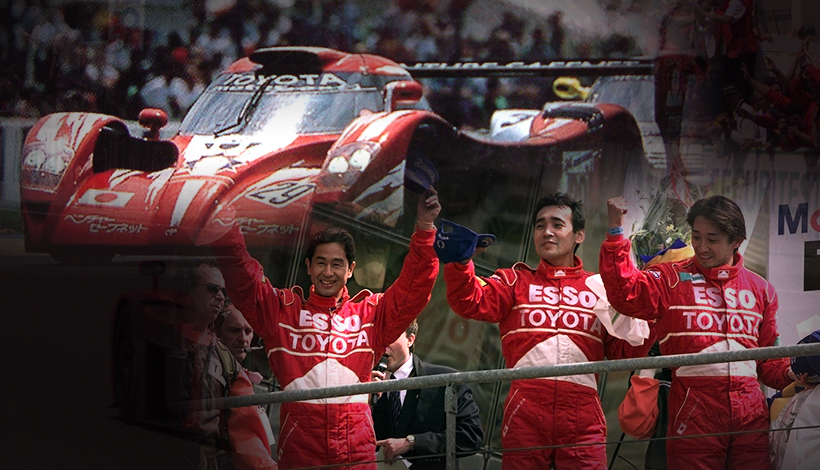
In 1995, the year that the cars competing in the 24 Hours of Le Mans had shifted from Group C cars to GT cars, one Toyota Supra GT LM car developed in line with the LM GT1 regulation was entered in the race. While mounting a modified 2.1-liter 3S-GT engine [used previously in Japan], there had been considerable difficulties in finding chassis settings to accommodate the awesome power of the LM-GT1 regulation. Nonetheless, the Supra had been able to run in 7th position for a while in the race and eventually finish the 24 hours in 14th place.The Supra was entered again in 1996, but its race ended with a crash just before 8:00 in the morning.
2012-2015Kazuki Nakajima become the first Japanese to take pole position in the TS040 HYBRID
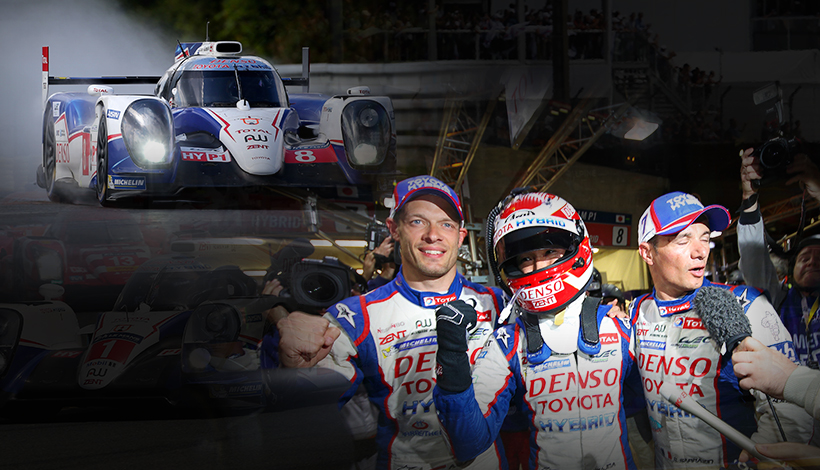
The year 2012 saw the start of the FIA World Endurance Championship (WEC), with the 24 Hours of Le Mans becoming a round of this new series. Toyota would participate in this inaugural WEC season with the Toyota TS030 HYBRID, a car combining a chassis built by TMG with a hybrid power unit developed at the Higashi-Fuji Technical Center. With this, a Toyota hybrid system made its first appearance at the 24 Hours of Le Mans. Two of the TS030 HYBRID finished the qualifying in 3rd and 5th positions, but in the race, one of them suffered a collision with an LM GTE Am class car and crashed. The other Toyota TS030 HYBRID also had to retire from the race due to machine trouble just before reaching the half-way point.
2016-2020Finally Victory in the 20th Attempt! First win for a Japanese car and driver
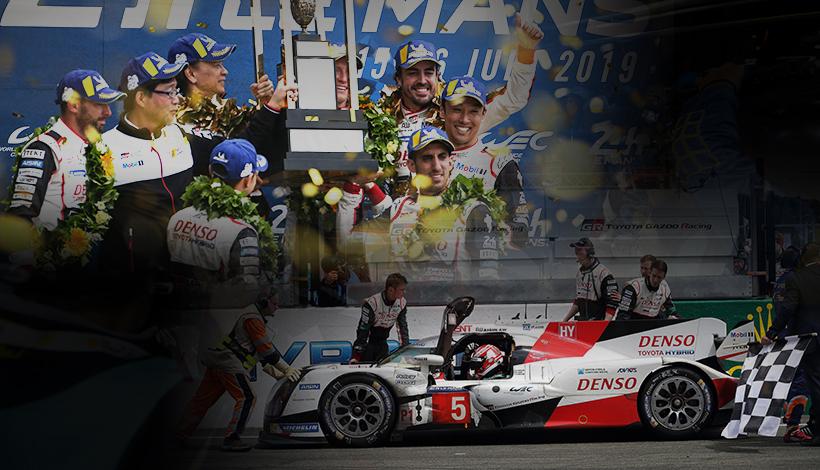
In the 2016 Le Mans race, two Toyota TS050 HYBRID cars and one Porsche were still running in the lead on the same lap at 21 hours into the race. With one hour left in the race the Toyota car No. 5 in first place had a 30-sec. lead over the Porsche in 2nd. A sudden pit stop by the Porsche with three laps remaining increased that lead for the TS050 HYBRID, and it look like it was finally the certain winner. But, with just five minutes left in the racecar No. 5 began to slow down. Then, on the final straight before entering the last lap it came to a stop. The Porsche took the win and the No. 6 Toyota ended the race in 2nd place.
2021-2024Victories continued in the new Hypercar era to give TGR a 5th straight title in 2022!Disappointing 2nd-place finishes followed in the 100th anniversary year 2023 and 2024.
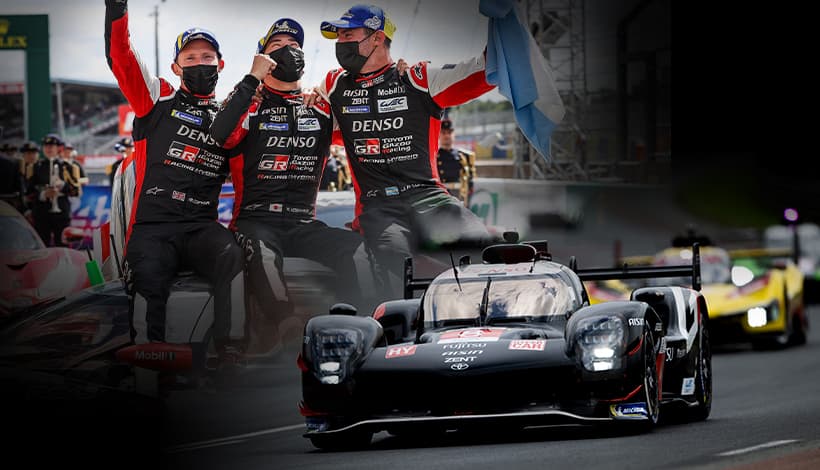
The 2021 season marked the start of a new era with the change in the pinnacle class from the LMP1 (Le Mans Prototype1) to the Hypercar (LMH=Le Mans Hypercar). The GR010 HYBRID car No. 7 driven by Kamui Kobayashi took the first Pole Position of this new era and the fifth in a row for the Toyota at Le Mans.
- -
- NEXT:1985-1988 The Le Mans challenges begin with production model-based small-displacement engines
- NEXT >


